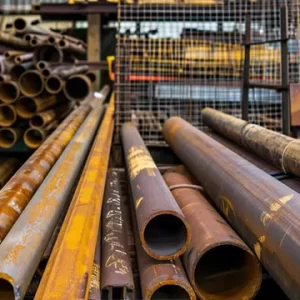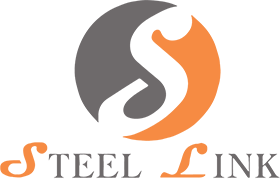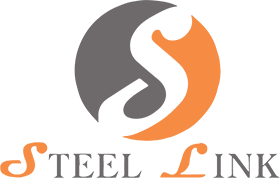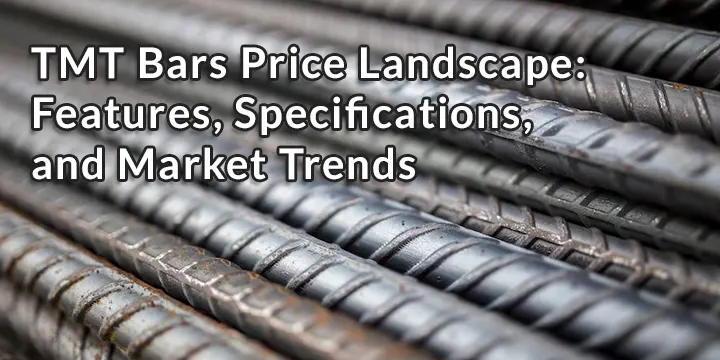TMT (Thermo-Mechanically Treated) bars stand tall as one of the most vital components. These bars are provisory. As we step into 2024, understanding the dynamics of TMT bars pricing becomes essential for stakeholders. Let’s delve into the features, specifications, and market trends influencing TMT bar price this year.
Features and Specifications:
TMT bar are renowned for their superior strength, ductility, and weldability, which make them ideal for withstanding seismic forces and other environmental stresses. Here are some key features and specifications to consider:

- Strength and Ductility: TMT bars undergo a specialized manufacturing process that imparts high tensile strength and ductility, ensuring the structural integrity of buildings and infrastructure projects.
- Corrosion Resistance: Most TMT bars are treated with anti-corrosive coatings to enhance their longevity, making them suitable for use in diverse environmental conditions.
- Weldability: TMT bars exhibit excellent weldability, enabling ease of fabrication and construction while maintaining structural integrity.
- Grades: TMT bars are available in various grades, denoted by their yield strength, such as Fe415, Fe500, and Fe550, among others. The choice of grade depends on the specific requirements of the construction project.
Specifications:
| TMT bar size (diameter) | Unit weight (kg/m)* |
| 8mm | 0.395 |
| 10mm | 0.617 |
| 12mm | 0.888 |
| 16mm | 1.579 |
| 20mm | 2.466 |
| 25mm | 3.853 |
| 32mm | 6.313 |
Applications:
Construction Companies and Contractors:

- Make informed decisions on material procurement and project budgeting.
- Anticipate cost fluctuations and mitigate risks for project profitability.
- Optimize construction planning based on TMT bar specifications.
Architects and Engineers:

- Design structurally sound and cost-effective buildings.
- Select appropriate TMT bar grades and properties for project requirements.
- Enhance construction performance and durability through material optimization.
Material Suppliers and Manufacturers:

- Adjust production strategies and pricing models based on market insights.
- Meet customer needs effectively by staying informed about industry trends.
- Enhance competitiveness through technological advancements and quality assurance.
Real Estate Developers:
- Incorporate TMT bar pricing dynamics into project feasibility studies and financial planning.
- Negotiate favorable contracts with contractors based on market trends.
- Optimize investment returns by assessing project viability and managing construction costs.
Government Agencies and Regulatory Bodies:
- Formulate effective regulations and policies to promote industry growth and sustainability.
- Support innovation, investment, and quality assurance in the construction sector.
- Foster a conducive regulatory environment for infrastructure development and safety.
Investors and Financial Institutions:
- Assess investment opportunities and project risks based on TMT bar market trends.
- Make informed financing decisions to optimize portfolio performance.
- Allocate capital strategically in the infrastructure and real estate sectors.
Understanding the Market: A Look at TMT Bar Price Trends:

The pricing of TMT bars is influenced by a multitude of factors, including raw material costs, demand-supply dynamics, manufacturing processes, and government regulations. Here’s an overview of key trends shaping TMT bar price in 2024:
- Raw Material Costs: The prices of raw materials like iron ore, coal, and scrap metal significantly impact TMT bar price. Fluctuations in these costs due to factors like geopolitical tensions, trade policies, and market demand can lead to price volatility.
- Demand-Supply Dynamics: The demand for TMT bars is closely tied to the construction industry’s health, which, in turn, is influenced by factors such as economic growth, infrastructure development initiatives, and urbanization trends.
- Technological Advancements: Innovations in manufacturing processes, such as the adoption of advanced cooling techniques and automation, can affect production costs and, consequently, TMT bar price.
- Government Regulations: Regulatory policies related to construction standards, environmental norms, and trade tariffs can impact the pricing and availability of TMT bars.
Making Informed Decisions: Tips for Navigating the Market:
Given the multifaceted nature of factors affecting TMT bar price, making informed decisions is crucial for stakeholders in the construction industry. Here are some tips for navigating the market effectively:
- Stay Updated: Regularly monitor industry news, market reports, and price indices to stay abreast of developments that could influence TMT bar price.
- Evaluate Suppliers: Compare offerings from different TMT bar manufacturers and suppliers, considering factors such as product quality, reliability, and after-sales support.
- Plan Strategically: Factor in potential price fluctuations and procurement lead times when planning construction projects to mitigate risks and avoid cost overruns.
- Explore Alternatives: Consider alternative construction materials or design approaches that could offer cost savings without compromising structural integrity.
Conclusion:
In 2024, understanding TMT bar price is important for anyone in construction. By knowing what’s driving prices, choosing the right bars, and planning ahead, you can manage costs and keep your projects running smoothly. It’s all about staying informed and making smart choices in a changing market.



Leave a Reply